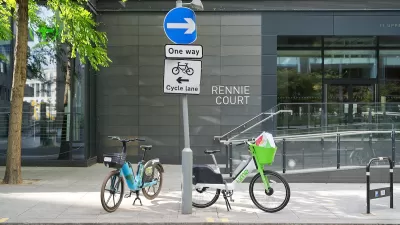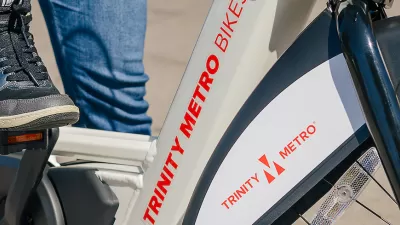Transport for London has a remarkable span of jurisdiction over transportation in the city—allowing TFL to pursue innovative projects with a relative degree of ease.
Ben Plowden, Surface Transport Director of Strategy and Planning at TFL, elaborated on initiatives for the road network and Thames River in an interview with The Planning Report.
Plowden delves into his experience negotiating between a mix of stakeholders, highlighting efforts to prioritize livability on London streets:
"The real challenge for us is trying to work out the optimal use of the road network overall, and of a particular location at a particular time of day, for the social and economic health of the city. We did a very important piece of work with the key road stakeholders about 18 months ago called the Roads Task Force. At the mayor’s request, we brought all of the people who normally talk to us bilaterally—all of the different lobbies—and underwent a process to come up with a solution for managing and operating the network. That hadn’t been done before! It produced a very interesting conversation. People left the room still thinking their interest should come first, but at least understanding that there are multiple users of the network."
Plowden also elaborates on Mayor Boris Johnson's ability to influence land-use decisions, and how those choices can lead to strategic changes in the transit and road networks:
"To support growth in existing areas and particularly growth in East London and outer London, where the land is, he can direct the activity and the spend by determining where capital investment goes and where operational service goes... The Greater London government was very keen to develop [the Docklands] out to the major financial and growth area. The Canary Wharf Group began the process of developing out Canary Wharf. Initially people got in and out of Canary Wharf primarily through the Docklands Light Railway, along with one main road that connects the City to the Docklands. The DLR was clearly not going to be adequate to sustain the amount of growth planned. So we built the extension of the Jubilee Line out to Canary Wharf and all the way to Stratford, where the Olympics took place subsequently. That unlocked that whole development."
FULL STORY: What Can London Learn from & Teach LA Regarding Urban Transport/Mobility?

Alabama: Trump Terminates Settlements for Black Communities Harmed By Raw Sewage
Trump deemed the landmark civil rights agreement “illegal DEI and environmental justice policy.”

Study: Maui’s Plan to Convert Vacation Rentals to Long-Term Housing Could Cause Nearly $1 Billion Economic Loss
The plan would reduce visitor accommodation by 25% resulting in 1,900 jobs lost.

Planetizen Federal Action Tracker
A weekly monitor of how Trump’s orders and actions are impacting planners and planning in America.

Wind Energy on the Rise Despite Federal Policy Reversal
The Trump administration is revoking federal support for renewable energy, but demand for new projects continues unabated.

Passengers Flock to Caltrain After Electrification
The new electric trains are running faster and more reliably, leading to strong ridership growth on the Bay Area rail system.

Texas Churches Rally Behind ‘Yes in God’s Back Yard’ Legislation
Religious leaders want the state to reduce zoning regulations to streamline leasing church-owned land to housing developers.
Urban Design for Planners 1: Software Tools
This six-course series explores essential urban design concepts using open source software and equips planners with the tools they need to participate fully in the urban design process.
Planning for Universal Design
Learn the tools for implementing Universal Design in planning regulations.
Caltrans
Smith Gee Studio
Institute for Housing and Urban Development Studies (IHS)
City of Grandview
Harvard GSD Executive Education
Toledo-Lucas County Plan Commissions
Salt Lake City
NYU Wagner Graduate School of Public Service





























